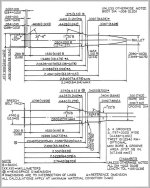armprairie, I have to confess to not doing the science.
The only factory loads I tried were the aforementioned 9x19 FMJs. I might guess they were Blazer Brass, but it was long ago.
Everything else was by me. I pretty much always use SnS Casting, and most all of what I've shot through this cylinder were 147gr round-nose coated.
At this suggestion, I measured the throats with inexpensive calipers I happen to have near my computer and got between 0.356 and 0.357", for whatever that's worth.
The accuracy of my .38 Super loads has been satisfactory, but then, I don't use them for bullseye, just mostly action pistol.
Edited to add:
While you are cautioned by the gunsmith conversion guys not to shoot .357 Magnum in your re-cut chambers, on the few occasions I've tried it, not much unusual happened. The fired cases did show a small ring at the Super's mouth cut but it wasn't a big deal to me.
If I was carrying a small revolver heavier than a 642, my preference would be something like the 640 Pro with the good sights, and cut for .38 Super.
9x23 Winchester would be shootable I suppose but I will guess the blast and recoil would be prohibitive. Super is a good balance.
Why Super over .357 Magnum reduced recoil? Because of the reloading process.
.38 or .357 cases in a moon are pretty floppy and the moons themselves are quite fragile. The .38 Supers are much less of both of those faults and can be thrown around with some force.
And the big advantage of the moons during a reload is ejection. Even when I was at the top of my revo action pistol game, my .38 Special reloads in the 586 were never as swift or as positive as the moonclipped .38 Super ones were.
Under stress, the moonclip with the short case length is superior.

